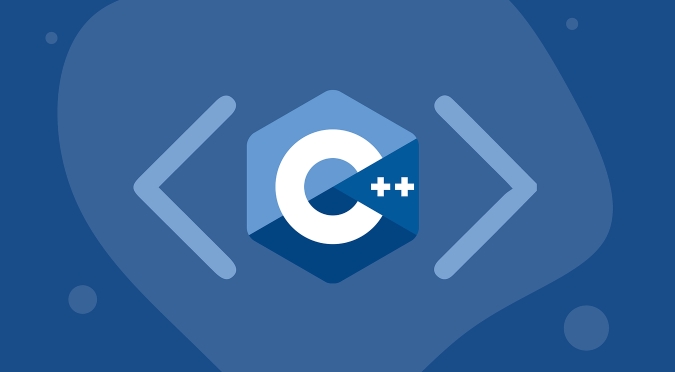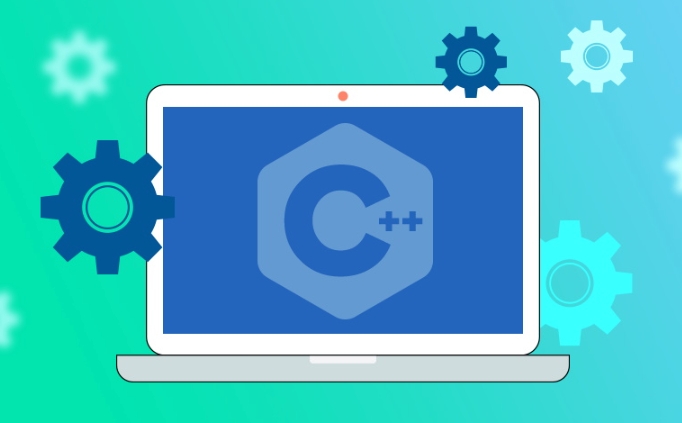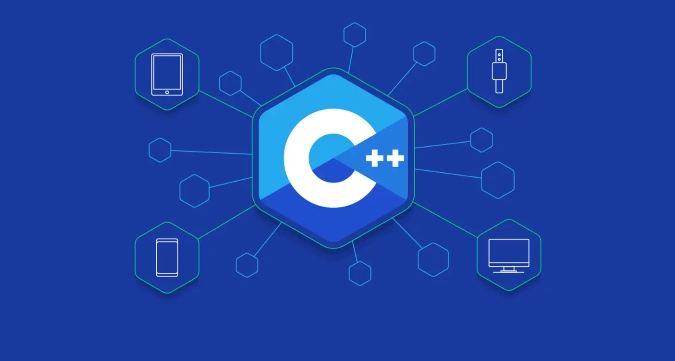What is a lambda capture clause in C ?
In C, the lambda capture clause controls how external variables are introduced into the lambda function through values, references, or default patterns. 1. The capture list is at the beginning of the lambda expression and is used to capture variables in the external scope for internal use of the lambda. 2. Capture through value ([var]) will copy the variable. Modification in the lambda will not affect the original variable. If you need to modify the copy, you need to use the mutable keyword. 3. By reference capture ([&var]) allows lambda to directly modify the original variable, but there is a risk of dangling references. 4. Default capture mode [=] automatically captures all used variables by value, [&] automatically captures by reference, but should be used with caution to avoid potential errors. 5. You can use a mix of specific captures with default captures, such as [=, &x] or [&, x], but the same variable cannot be captured repeatedly and may affect the readability of the code. 6. When choosing a capture method, you should weigh performance and behavior based on your needs to avoid unnecessary copying and misuse of default capture.

In C , a lambda capture clause determines how variables from the surrounding scope are made available inside a lambda function. It's the part of the lambda expression enclosed in square brackets [] , and it controls whether those variables are captured by value, by reference, or not at all.

What the Capture Clause Does
The capture clause sits at the very beginning of a lambda expression. Its job is to "capture" (ie, bring into the lambda's scope) variables that exist outside the lambda but are needed for its execution. Without a proper capture clause, you won't be able to access external variables inside your lambda body.

Capturing Variables by Value ( [var] )
When you capture a variable by value, a copy of that variable is stored inside the lambda. This means changes made inside the lambda do not affect the original variable.
For example:

int x = 10;
auto func = [x]() { std::cout << x; };
x = 20;
func(); // Outputs 10, not 20 Here, x is captured by value, so even after changing x to 20, the lambda still holds the original value (10) when it was created.
If you want to modify the captured copy inside the lambda, you need to add the mutable keyword:
auto func = [x](int y) mutable {
x = y;
std::cout << x;
}; Now, x can be changed within the lambda — but again, only the copy.
Capturing Variables by Reference ( [&var] )
Capturing by reference gives the lambda direct access to the original variable. Any modifications inside the lambda will affect the original variable.
Example:
int x = 10;
auto func = [&x]() { x = 30; };
func();
std::cout << x; // Outputs 30This is useful when you want to modify state outside the lambda. But it also introduces risk — if the lambda outlives the variable it references, you end up with a dangling reference.
Default Capture Modes: [=] and [&]
Instead of listing each variable, you can use default capture modes:
-
[=]captures all used variables by value -
[&]captures all used variables by reference
These are convenient but should be used carefully. For instance:
int a = 1, b = 2;
auto func = [=]() { std::cout << ab; }; Here, both a and b are captured by value automatically.
Similarly:
auto func = [&](int x) { b = x; }; In this case, any referenced variable (like b ) will be captured by reference.
Using default captures can sometimes hide subtle bugs, especially when dealing with long-lived lambdas or complex scopes.
Mixing Specific and Default Captures
You can combine specific and default captures in one clause. For example:
-
[=, &x]captures everything by value, but capturesxby reference -
[&, x]captures everything by reference, but capturesxby value
Just note that once you specify a default capture, you can't re-capture any variable in the same clause. Also, mixing them can make code harder to read unless done intentionally.
A few points to remember:
- You can't have both
[=, x]and[&, x]in the same capture list. - The order doesn't matter —
[x, =]is the same as[=, x].
When to Use Which?
Choosing between capture by value or reference depends on what you're trying to achieve:
- Use capture by value when you want a snapshot of the variable at the time the lambda is created.
- Use capture by reference when you need to reflect changes made inside the lambda back to the original variable.
- Be cautious with
[=]and[&]— they're powerful but can lead to unintended behavior if misused.
Also, avoid capturing large objects by value unless necessary — copying them may impact performance.
So yes, lambda capture certificates are pretty straightforward once you understand how they work, but easy to misuse if you're not paying attention.
The above is the detailed content of What is a lambda capture clause in C ?. For more information, please follow other related articles on the PHP Chinese website!

Hot AI Tools

Undress AI Tool
Undress images for free

Undresser.AI Undress
AI-powered app for creating realistic nude photos

AI Clothes Remover
Online AI tool for removing clothes from photos.

Clothoff.io
AI clothes remover

Video Face Swap
Swap faces in any video effortlessly with our completely free AI face swap tool!

Hot Article

Hot Tools

Notepad++7.3.1
Easy-to-use and free code editor

SublimeText3 Chinese version
Chinese version, very easy to use

Zend Studio 13.0.1
Powerful PHP integrated development environment

Dreamweaver CS6
Visual web development tools

SublimeText3 Mac version
God-level code editing software (SublimeText3)

Hot Topics
 How to pass a function as a parameter in C ?
Jul 12, 2025 am 01:34 AM
How to pass a function as a parameter in C ?
Jul 12, 2025 am 01:34 AM
In C, there are three main ways to pass functions as parameters: using function pointers, std::function and Lambda expressions, and template generics. 1. Function pointers are the most basic method, suitable for simple scenarios or C interface compatible, but poor readability; 2. Std::function combined with Lambda expressions is a recommended method in modern C, supporting a variety of callable objects and being type-safe; 3. Template generic methods are the most flexible, suitable for library code or general logic, but may increase the compilation time and code volume. Lambdas that capture the context must be passed through std::function or template and cannot be converted directly into function pointers.
 What is a POD (Plain Old Data) type in C ?
Jul 12, 2025 am 02:15 AM
What is a POD (Plain Old Data) type in C ?
Jul 12, 2025 am 02:15 AM
In C, the POD (PlainOldData) type refers to a type with a simple structure and compatible with C language data processing. It needs to meet two conditions: it has ordinary copy semantics, which can be copied by memcpy; it has a standard layout and the memory structure is predictable. Specific requirements include: all non-static members are public, no user-defined constructors or destructors, no virtual functions or base classes, and all non-static members themselves are PODs. For example structPoint{intx;inty;} is POD. Its uses include binary I/O, C interoperability, performance optimization, etc. You can check whether the type is POD through std::is_pod, but it is recommended to use std::is_trivia after C 11.
 What is the mutable keyword in C ?
Jul 12, 2025 am 03:03 AM
What is the mutable keyword in C ?
Jul 12, 2025 am 03:03 AM
In C, the mutable keyword is used to allow the object to be modified, even if the object is declared as const. Its core purpose is to maintain the logical constants of the object while allowing internal state changes, which are commonly found in cache, debug counters and thread synchronization primitives. When using it, mutable must be placed before the data member in the class definition, and it only applies to data members rather than global or local variables. In best practice, abuse should be avoided, concurrent synchronization should be paid attention to, and external behavior should be ensured. For example, std::shared_ptr uses mutable to manage reference counting to achieve thread safety and const correctness.
 What is memory alignment and why is it important in C ?
Jul 13, 2025 am 01:01 AM
What is memory alignment and why is it important in C ?
Jul 13, 2025 am 01:01 AM
MemoryalignmentinC referstoplacingdataatspecificmemoryaddressesthataremultiplesofavalue,typicallythesizeofthedatatype,whichimprovesperformanceandcorrectness.1.Itensuresdatatypeslikeintegersordoublesstartataddressesdivisiblebytheiralignmentrequiremen
 What is an abstract class in C ?
Jul 11, 2025 am 12:29 AM
What is an abstract class in C ?
Jul 11, 2025 am 12:29 AM
The key to an abstract class is that it contains at least one pure virtual function. When a pure virtual function is declared in the class (such as virtualvoiddoSomething()=0;), the class becomes an abstract class and cannot directly instantiate the object, but polymorphism can be realized through pointers or references; if the derived class does not implement all pure virtual functions, it will also remain an abstract class. Abstract classes are often used to define interfaces or shared behaviors, such as designing Shape classes in drawing applications and implementing the draw() method by derived classes such as Circle and Rectangle. Scenarios using abstract classes include: designing base classes that should not be instantiated directly, forcing multiple related classes to follow a unified interface, providing default behavior, and requiring subclasses to supplement details. In addition, C
 How to generate a UUID/GUID in C ?
Jul 13, 2025 am 02:35 AM
How to generate a UUID/GUID in C ?
Jul 13, 2025 am 02:35 AM
There are three effective ways to generate UUIDs or GUIDs in C: 1. Use the Boost library, which provides multi-version support and is simple to interface; 2. Manually generate Version4UUIDs suitable for simple needs; 3. Use platform-specific APIs (such as Windows' CoCreateGuid), without third-party dependencies. Boost is suitable for most modern projects, manual implementation is suitable for lightweight scenarios, and platform API is suitable for enterprise environments.
 C vs Python performance
Jul 13, 2025 am 01:42 AM
C vs Python performance
Jul 13, 2025 am 01:42 AM
C is usually faster than Python, especially in compute-intensive tasks. 1.C is a compiled language that directly runs machine code, while Python executes while interpreting and executing, which brings additional overhead; 2.C determines the type during compilation and manages memory manually, which is conducive to CPU optimization, and Python dynamic typing and garbage collection increase burden; 3. It is recommended to be used for high-performance scenarios such as game engines and embedded systems. Python is suitable for data analysis and rapid development scenarios with priority efficiency; 4. Performance testing is recommended to use time tools, eliminate I/O interference, and average values multiple times to obtain accurate results.
 Understanding move assignment operator in C
Jul 16, 2025 am 02:20 AM
Understanding move assignment operator in C
Jul 16, 2025 am 02:20 AM
ThemoveassignmentoperatorinC isaspecialmemberfunctionthatefficientlytransfersresourcesfromatemporaryobjecttoanexistingone.ItisdefinedasMyClass&operator=(MyClass&&other)noexcept;,takinganon-constrvaluereferencetoallowmodificationofthesour







